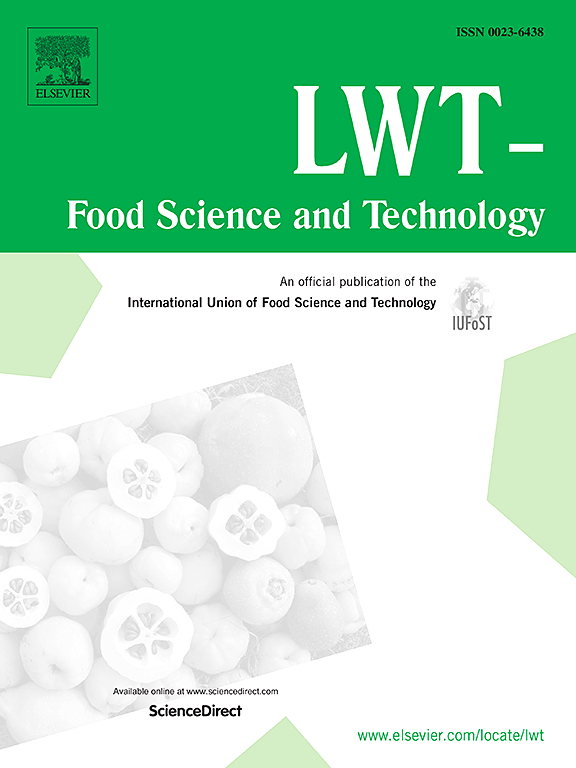Influence of micro-oxygenation aging with oak chips on the oxidation-reduction potential, color, phenolic parameters and volatile compounds of wine
IF 6
1区 农林科学
Q1 FOOD SCIENCE & TECHNOLOGY
引用次数: 0
Abstract
Micro-oxidation aging with oak chips mimics wine aging in barrels, shortening the process and cutting costs. However, definitive parameters to guide this process are currently lacking. In this study, wines were aged by controlling the addition of varying amounts of oxygen and oak chips to examine the changes in oxidation-reduction potential (ORP), color, and flavor quality, as well as the feasibility of utilizing ORP as an indicative parameter for aging. The results showed ORP values initially rose then fell during aging. The b∗ value in Cabernet Sauvignon with high oak chips concentration and high oxygen was 10 % higher than other groups. Medium oak chips addition with high oxygen increased the Ethanol Index (EtIn) of Cabernet Sauvignon by over 40 % and the terpene content of both Cabernet Sauvignon and Marselan above 30 %, compared to other treatments after aging. Correlation analysis showed significant correlations (p < 0.05) between ORP values and color parameters, phenolic parameters, and key volatile compounds. The R2 values of nonlinear models focusing on ORP and color, flavor quality parameters all exceed 0.70, indicating precise fitting. This study provides a scientific foundation for understanding oak chips and micro-oxygenation impacts on aging and supports quality control in winemaking.
求助全文
约1分钟内获得全文
求助全文
来源期刊

LWT - Food Science and Technology
工程技术-食品科技
CiteScore
11.80
自引率
6.70%
发文量
1724
审稿时长
65 days
期刊介绍:
LWT - Food Science and Technology is an international journal that publishes innovative papers in the fields of food chemistry, biochemistry, microbiology, technology and nutrition. The work described should be innovative either in the approach or in the methods used. The significance of the results either for the science community or for the food industry must also be specified. Contributions written in English are welcomed in the form of review articles, short reviews, research papers, and research notes. Papers featuring animal trials and cell cultures are outside the scope of the journal and will not be considered for publication.
 求助内容:
求助内容: 应助结果提醒方式:
应助结果提醒方式:


